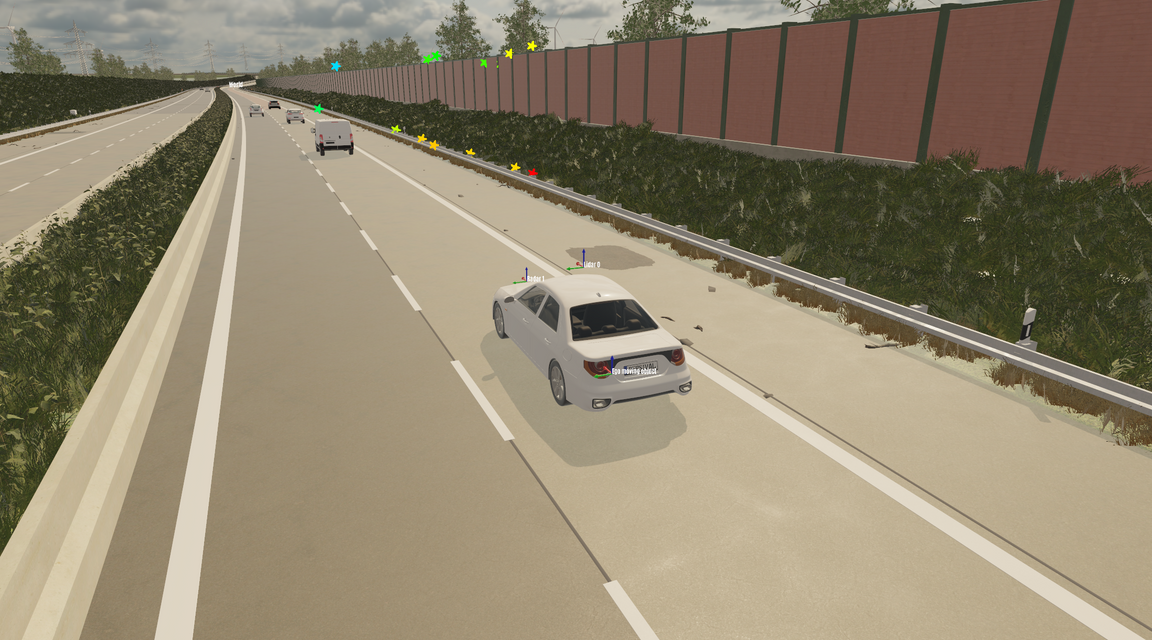
Physical Models
Talk to our expert!

High-Fidelity Models
Radar and lidar simulation using ray tracing

Physical Lidar Models
A lidar sensor is influenced by various design parameters and physical effects. We can simulate complex and changing beam patterns, beam divergence, bleeding and blooming, motion blur or motion scan effect multi-path propagation through specular reflection or partial transmission. Therefore, a variety of different sensor technologies, like spinning, prism or MEMS can be simulated. With the multi-path propagation in our custom ray tracing, we can simulate multiple returns per beam.
Physical FMCW Lidar Models
We are one of the first companies to offer FMCW lidar sensor models. FMCW lidars have the big advantage over conventional time-of-flight lidars to directly measure radial relative velocity. Our models are capable of simulating the velocity component on every hit point in the 3D environment, including velocities on individually moving parts like wheels and the arms and legs of a human. In the image you can see a point cloud of an FMCW lidar colored by relative radial velocity.


Physical Radar Models
Radar sensors are influenced by metallic structure and have a strong tendency for multi-path propagation. We use the Fourier-Tracing approach to accurately simulate the FFT outputs of chirp sequence radars. Common CFAR, peak detection and interpolation algorithms are used to generate the radar detection output.
High-Fidelity Models
Ray-Tracing Backbone with Standardized Interfaces

Utilizing the Powerful SMDL
Sensor models with the highest requirements need to be physically accurate. Don't test AI with AI. Use physical simulation instead. Our high-fidelity radar and lidar models are developed using our powerful Sensor Model Development Library. Inside the sensor models, a full 3D environment is build up based on standardized interfaces. A custom ray tracing with wavelength dependent material interaction is performed. The ray tracing results are used to generate the realistic, high-fidelity sensor output.
Fully Standardized Interfaces
The input of the sensor models is fully standardized. The main input is an ASAM OSI SensorView message. This message contains the ground truth information of all moving and stationary objects. Furthermore, it contains references to ASAM OpenMATERIAL 3D compliant 3D assets. They contain the geometry and material information needed for the ray tracing.

Parameterizable to any Real-World Sensor
The radar and lidar models can be parameterized to any real-world sensor. The parameters are either taken from the datasheets of the sensors or derived from measurement data. This includes a variety of different parameters and effects including timing effects. Every ray in the ray tracing is shot with an individual time stamp. The beam pattern can be changed in any simulation time step, facilitating for example complex beam patterns of MEMS lidars.




